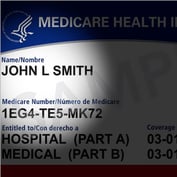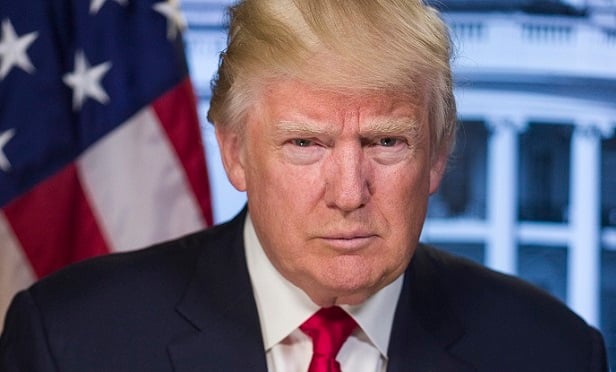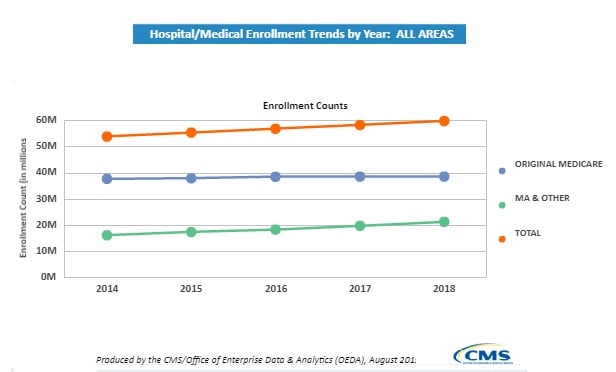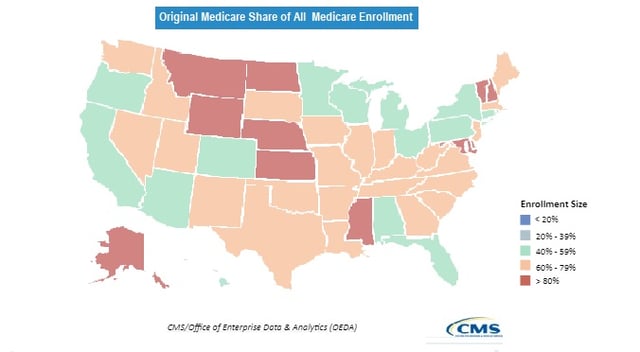President Donald Trump today issued an executive order that could, eventually, lead to massive changes in how just about how every public and private payer in the United States pays for all patient care.
He has also proposed processes that could lead to many other changes in traditional Medicare program and Medicare Advantage plan benefits.
The Trump administration said in a commentary on the executive order that it will maximize “freedom for Medicare patients and providers by reducing regulatory burdens and eliminating unnecessary barriers.”
(Related: Trump Rule to Put Prices in Drug Ads Is Shot Down by Judge)
“President Trump is putting seniors first by strengthening the Medicare system and helping ensure the program’s availability for years to come,” officials said in the commentary. “Medicare-for-All bills proposed by Democrats in Congress threaten to end the Medicare program as we know it and eliminate choice for America’s seniors. Seniors are overwhelmingly satisfied with their Medicare coverage and President Trump will stand up to protect it.”
The Executive Order Medicare Provider Reimbursement Sections
Today, Medicare program managers at the Centers for Medicare and Medicaid Services (CMS), an arm of the U.S. Department of Health and Human Services (HHS), set provider “fee for service” pay rates by coming up with a “relative value unit” (RVU), or basic estimated value for a given unit of service. The RVU includes factors such as the value of the physician’s time, the medical practice overhead costs, and liability insurance costs.
Medicare managers translate RVUs into fees using formulas that reflect the provider’s location, complexity of the patient’s case, and other variables.
The Medicare Advantage system now provides an alternative to traditional Medicare fee-for-service coverage for about 22 million of the 64 million people who have Medicare benefits.
But the Medicare fee-for-service system still governs about $400 billion per year in pay for care for about 42 million people.
(Quiz: How Well Do You Know Medicare?)
Even when traditional Medicare program managers negotiate different kinds of payment arrangements for some enrollees, such as pilot program payments based on the bundle of services associated with one specific “episode of care,” the negotiators may be using a comparison with the Medicare fee-for-service charges as a reality check.
Similarly, the negotiators who bargain with hospitals and physician groups to set the provider pay rates for Medicare Advantage plans, state-run Medicaid programs, privately administered Medicaid plans, commercial health insurance plans, and care for patients who seek emergency care or other care out of their health plans’ networks typically start with Medicare fee-for-service rates as the base.
In many cases, for example, commercial health plans may negotiate separate charges for certain services, but they might set the reimbursement rate for most services at “200% of the Medicare,” or “250% of Medicare,” for most services.
(Related: Here’s a New Explanation for Why U.S. Health Care Spending Is So Damn High)
Even when states pay for charity care for patients who have no means to pay for care at all, states may tie the charity care reimbursement rate to the Medicare fee-for-service rate.
In the new executive order, Trump says he wants the HHS secretary, Alex Azar, to look into moving toward “true market-based pricing” in the Medicare fee-for-service program.
Azar is supposed to recommend approaches toward that transition within 180 days, through Trump’s assistants for domestic and economic policy, according to the executive order.
One possibility Azar should consider is using Medicare Advantage-negotiated rates to set the Medicare fee-for-service rates, rather than having Medicare fee-for-service rates shape the Medicare Advantage plan rates, according to the order.
Other reimbursement-change options proposed include:
- Using a “shared savings and competitive bidding approach” in Medicare, meaning that reimbursement rates would depend partly on how well providers hold down the overall cost of care and improve the quality.
- Adding new kinds of information streams and information sharing mechanisms that might lower the cost of care and improve the quality.
In a related executive order provision, Trump calls for the HHS secretary to work with the chairman of the Council of Economic Advisers to come up with ideas for changing the Medicare fee-for-service payment system to “more closely reflect the prices paid for services in [Medicare Advantage] and the commercial insurance market, to encourage more robust price competition, and otherwise to inject market pricing into Medicare [fee for service] reimbursement.”
The current chairman of the council is Kevin Hassett. Trump appointed Hassett to the post in 2017. Hassett has a bachelor’s degree from Swarthmore and a master’s degree and doctorate from the University of Pennsylvania. He advised John McCain on economics during the 2000 presidential primaries. He also advised former President George W. Bush and Mitt Romney during their presidential campaigns.
He has been the State Farm James Q. Wilson Chair in American Politics and Culture at the American Enterprise Institute.
Other Executive Order Proposals
Here are four other order provisions that could affect financial professionals who help clients with health insurance or personal health accounts:
1. Medicare money: The HHS secretary is supposed to take actions, within one year, to let Medicare Advantage plans pay enrollees cash rebates to get services that could cut plan spending or improve the quality of care. Some group health plans already reward participants who exercise, get checkups or fill out health questionnaires with lower rates. A Medicare Advantage cash rewards program might let Medicare Advantage plans offer similar types of wellness or chronic condition management programs.
2. Health accounts: The HHS secretary is supposed to take actions, within one year, to remove barriers to Medicare Advantage enrollees’ use of Medicare medical savings accounts.
3. Provider access: The HHS secretary is supposed to propose regulations, within one year, to remove barriers that keep nurse practitioners, and other non-physician providers from “practicing at the top of their profession.”
4. Value-based insurance design (VBID): A VBID program is supposed to use benefits design to encourage patients to get more higher-value care, even if it’s expensive, and less low-value care, even if it’s cheap. The executive order calls for the HHS secretary to take actions, within one year, to remove barriers that keep Medicare Advantage VBID plans from covering new technologies simply because those technologies are not covered by the traditional “Original Medicare” fee-for-service program.
Trump Administration Executive Order History
The Trump administration issued a sweeping, three-part health insurance cost executive order in 2017 that called for the administration to remove a 180-day Obama-era cap on short-term health insurance coverage periods; to ease the rules that govern association health plans; and to ease employer access to health reimbursement arrangements.
Administration agencies completed all of the actions described in that order.
The provision that has had the most visible, most immediate effect may be the one that lifted the 180-day limit on how long a short-term health insurance policy can stay in effect.
Resources
A copy of the executive order is available here.
A copy of the document about the order is available here.
— Read 3 Trump Health Benefits Executive Order Facts, for Agents, on ThinkAdvisor.
— Connect with ThinkAdvisor Life/Health on Facebook, LinkedIn and Twitter.







 October 03, 2019 at 07:06 PM
October 03, 2019 at 07:06 PM
















 Slideshow
Slideshow



